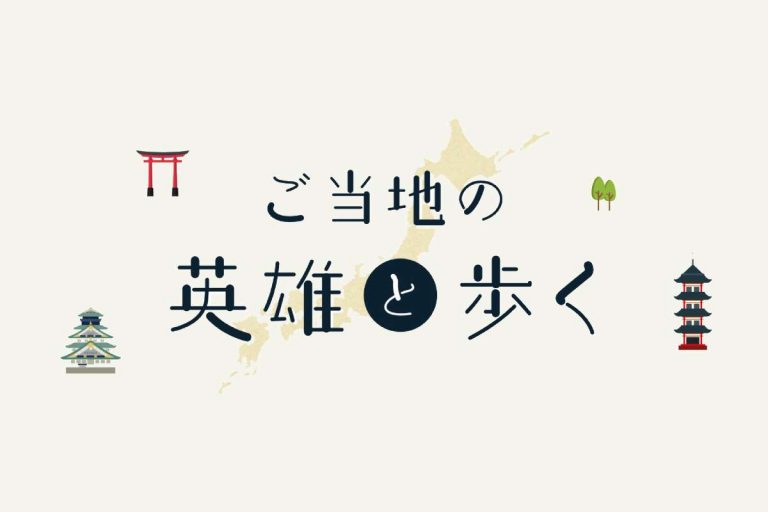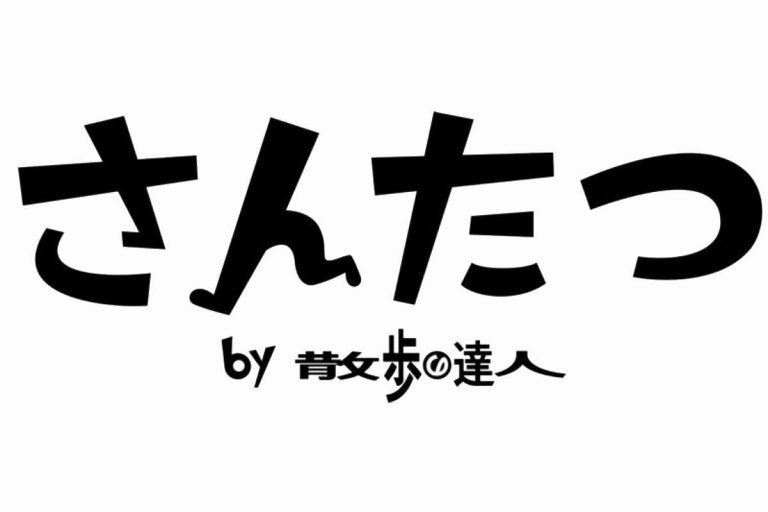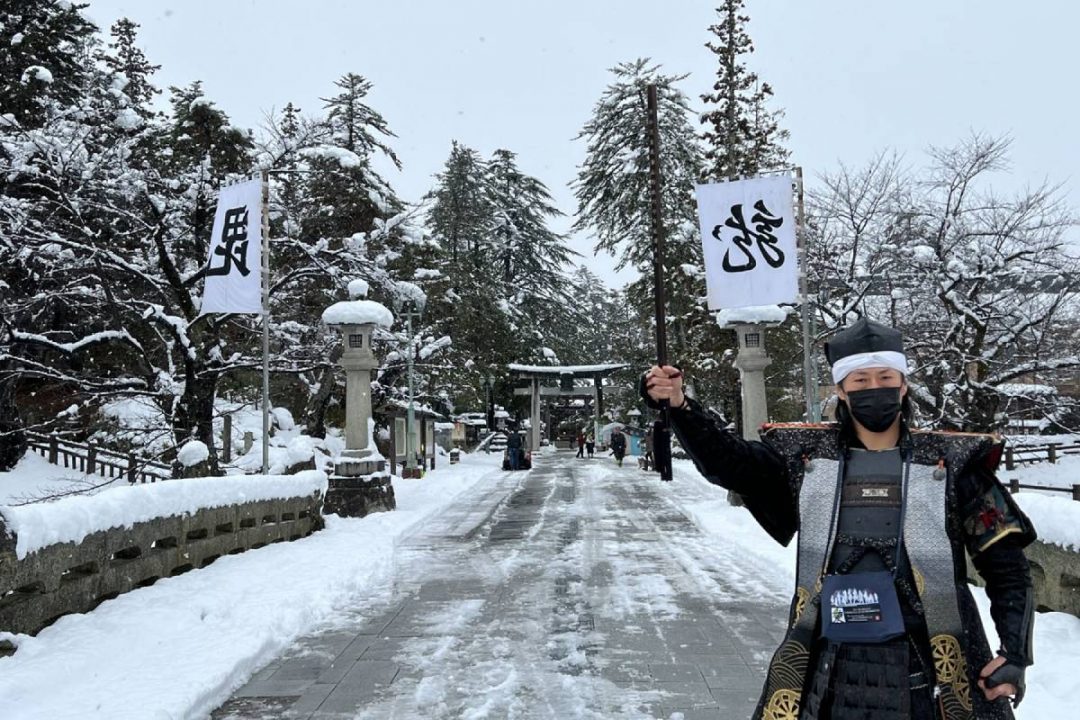
Stories from the Yamagata Ai no Bushoutai! Embark on a Historic Walk of Yonezawa!
Walk the Town with a Local Hero—–.
To truly understand a town’s charms, ask those who bring it to life!
In this article we’ll be introducing history and culture known only to those who are deeply rooted in the community.
In this edition, Introducing the serene and beautiful snow-covered landscape of Yonezawa Castle Ruins and the castle town.
-
We are the Yamagata Ai no Bushoutai
Hello everyone.
I am Akiyasu Shimura of the Yamagata Ai no Bushoutai, vassal to the Mogami clan and lord of Hasedō Castle.
We of the Yamagata Ai no Bushoutai are a band of warriors with links to Yamagata Prefecture. We sortie to festivals and events both inside and outside the prefecture and conduct demonstrations and tourism promotion so that the world will know of the charms found across the whole of Yamagata.
This message is to share those charms in writing!
In this first edition, we seek to share the sites to see in Yonezawa City, our homeland and the former castle town of the Uesugi clan, and the perspective of the Mogami clan, who fought against the Uesugi clan, together with our lord Yoshiaki Mogami.
And now we sally forth to Yonezawa!
What is the Yamagata Ai no Bushoutai?
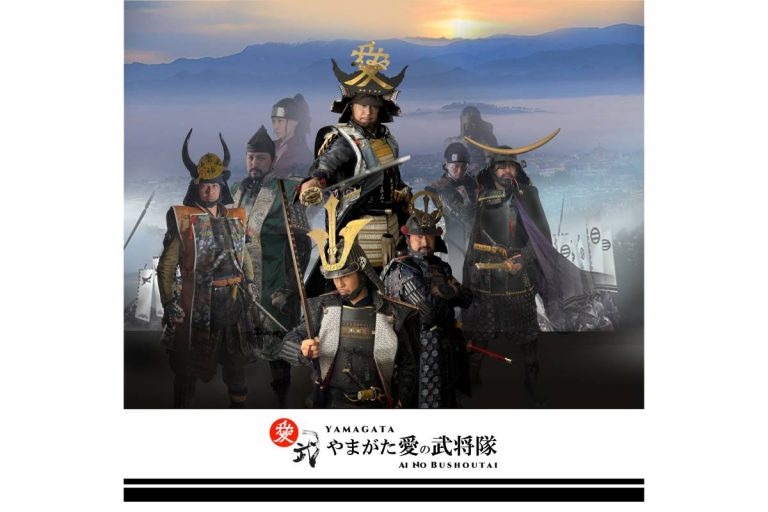
The Yamagata Ai no Bushoutai is a company of samurai warlords with close ties to Yamagata Prefecture that was formed in 2010. These warriors of the Warring States period, who fought for supremacy in Yamagata, Tohoku, see tourism promotion as a modern-day battlefield, and are spreading the history and culture of the entire prefecture and its many unique local attractions to the whole of Japan.

From left in the photo: Mitsuyasu Shimura, Lord Yoshimitsu Mogami.
We begin at JR Yonezawa Station, the gateway to Yonezawa City.
The station is about two hours from Edo (Tokyo) by bullet train.
A huge Yonezawa Bull is waiting to greet you on the station platform.
-
Swords, Armor, and Firearms at the Miyasaka Archaeological Museum

First we’d like to introduce the Miyasaka Archaeological Museum, just eight minutes on foot from the station.
The late Sir Zensuke Miyasaka, the first curator, founded this museum with his collection of armor, weapons, folding screens, and other historically and culturally significant items that he had gathered over his lifetime of 80 years.
Of course, Lord Mogami particularly liked the armor.
The museum is home to many suits of armor from the Uesugi clan, including: Lord Kenshin Uesugi, the first head of the clan; Lord Kagekatsu Uesugi, the second head; Sir Keiji Maeda, the most eccentric samurai of the Sengoku era; and Sir Kanetsugu Naoe, who was immortalized in the NHK Taiga Drama Tenchijin.
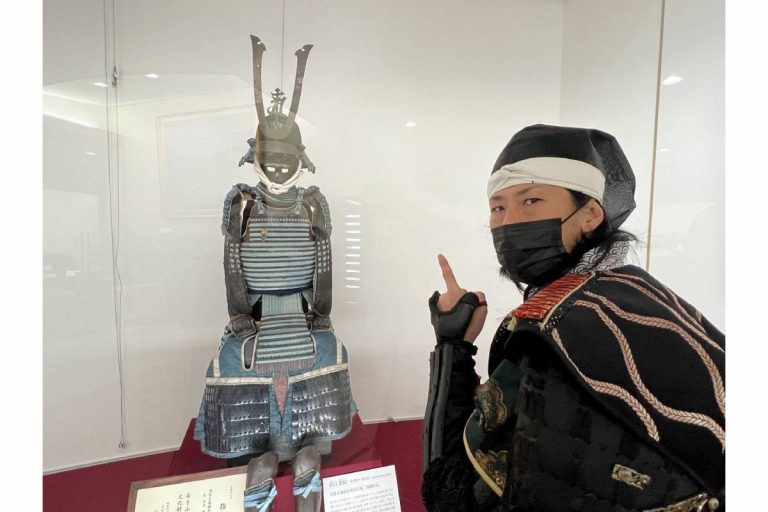
“Seeing the intricate designs that we can’t see on the battlefield excites a warrior’s heart.”
Speaking of Lord Naoe, while he is famous for the “love” (ai) crest on his helmet, the armor displayed here is said to be what he wore during the Battle of Dewa in the 5th year of Keichō (1600)—known as the Northern Battle of Sekigahara—when he fought against the Mogami clan.
The museum also exhibits various items that convey the warrior spirit and the intensity of battle, including swords cherished by Lord Kenshin Uesugi, beautiful spears adorned with mother-of-pearl inlay work, and firearms used by the Uesugi musket corps.
-
Uesugi-jinja Shrine, where Dragons are Born and Live
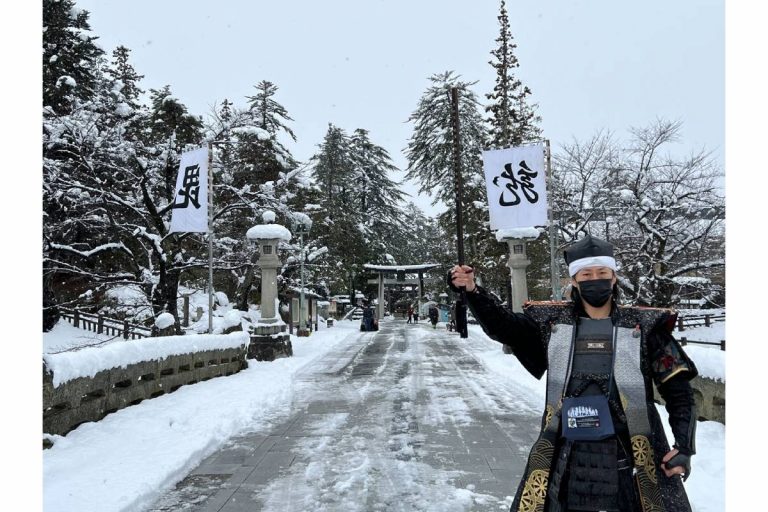
About 22 minutes by bus from the museum, you’ll find the site where Yonezawa Castle, the stronghold of the Uesugi clan, once stood. Today, it is home to a shrine dedicated to the god of war, Lord Kenshin Uesugi.
Festivals are held throughout the year: the Uesugi Festival in spring; the Yonezawa Noryō Fireworks Display held on the moat in summer; the Naseba Naru Autumn Festival in autumn; and the Uesugi Snow Lantern Festival in winter. Children can play at the nearby Matsugasaki Park. Many visitors enjoy strolling around the moat, which stretches approximately one kilometer in circumference.
This is not just a tourist destination, but also a place of relaxation for local residents.
Over the coming winter, the streetlights turn orange, illuminating the snow-laden trees along the streets and creating a scene as beautiful as cherry blossoms in full bloom.

“Masamune, you are still beloved by the people of your homeland.”
While Yonezawa prospered as a castle town of the Uesugi clan, we must not forget another important figure.
That is Lord Masamune Date, the 17th head of the Date clan.
Lord Date was known as the “One-Eyed Dragon” and distinguished himself in countless battles. He later became the founder of Sendai Domain, establishing Sendai, the “City of Trees.” Although he is strongly associated with Sendai, he was in fact born in Yonezawa.
Yonezawa was once Date territory, and it is said that Lord Date lived in Yonezawa until the age of 24, departing from here for many battles. That is why you will find the Monument to the Birthplace of Lord Masamune Date at Uesugi Shrine.
Lord Mogami was Lord Masamune’s uncle. Although the Date and Mogami clans frequently clashed in battle, Lord Mogami gazes upon the monument with pride.
Seeing him like that warmed my heart, even though Uesugi Shrine in winter is indeed cold.
Next, allow us to show you a place where you can warm up.
-
Savor the Taste of History and the Land at Toko Brewing Museum
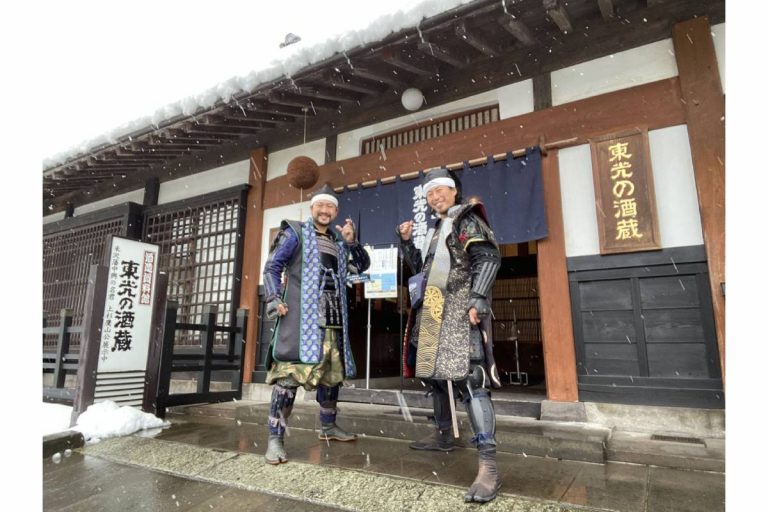
Kojima Sohonten was founded in the second year of Keicho (1597).
The Toko Brewing Museum, one of the largest sake brewing museums in the Tohoku region, is a 15-minute walk from Uesugi Shrine. It is directly operated by Kojima Sohonten, one of Yonezawa’s leading sake breweries. “Toko” is the name of the sake representing Kojima Sohonten.
Toko has long been beloved by the people of Yonezawa, and is affectionately called “Toko-san” by the locals, rather than by the company name. This tells you just how cherished it is.
The brewery prospered as the official sake purveyor to the Uesugi clan, and was so beloved by the family that even when a prohibition was issued during a famine, they were permitted to continue brewing sake for religious ceremonies and special events.
I’d love to have a drink right now…but first, let’s take a tour of the brewery?
The interior recreates a Meiji-era sake brewery. You can see displays of tools used in sake-making from that period. What particularly catches the eye is an enormous sake barrel measuring six shaku (approximately 1.8 m)!
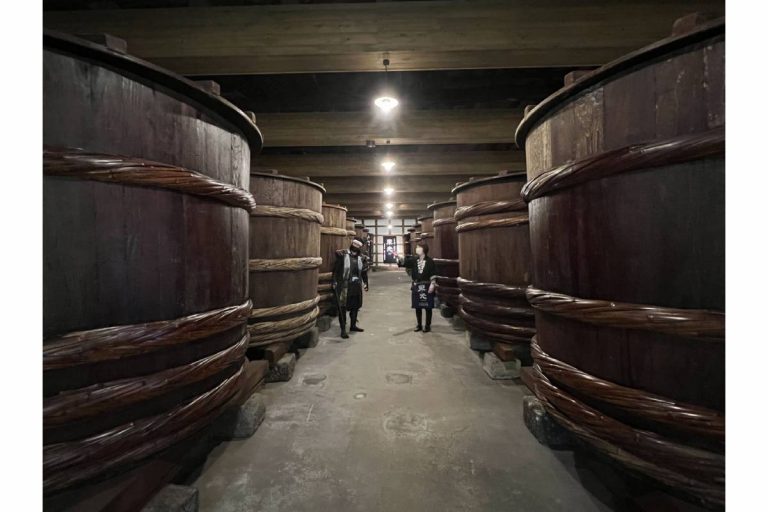
Lord Mogami: “Oooooooh”
Both Lord Mogami and I were overwhelmed by the impressive sight of these massive sake barrels lined up in perfect order.
Perhaps the souls of the master brewers (toji), who devoted all their efforts to creating “delicious sake,” still dwell within these tools.
Now that we have finished the tour, it’s finally time for that drink.
You can enjoy shopping and sake tasting at the attached brewery-operated shop.
On this occasion, I, Akiyasu Shimura, will be partaking!

Lord Mogami: “Akiyasu, how does it taste?”
With the first sip, sweetness and umami spread gently across my palate, and as the aroma passes through my nose, the word “delicious” naturally escaped my lips. Enticed by the fragrance, I found myself thinking “just one more sip, one more sip…” as my cup kept moving toward my mouth.
I am now thoroughly warmed up thanks to savoring the history of sake-making and this delicious brew.
While we live in an age where online shopping offers great convenience, there are things you can only experience by shopping in person.
-
Ending
So how was it?
Through this journey, we too have rediscovered the charms of Yonezawa. Historical romance, delicious food—these are things we don’t notice in our everyday lives here, but by walking around like this, we were able to re-encounter various attractions. A stroll is truly a wonderful thing.
I hope you all will come to Yonezawa and experience its charms for yourselves!
Next time, Lord Kanetsugu Naoe, the chief retainer of the Uesugi clan, will introduce Yonezawa. Please look forward to it!
Photos & text by Mitsuyasu Shimura(Yamagata Ai no Bushoutai)
supported by Miyasaka Archaeology Museum,Kojima Sohonten -
Here we also introduce Japanese castles!

